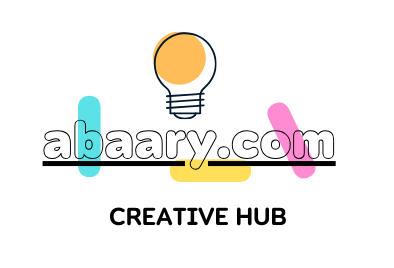The Impact Of Mobile Apps On eLearning
Mobile apps are reshaping the landscape of eLearning, transforming not just access to educational content but also fundamentally altering how we learn and teach. Beyond convenience, mobile apps are catalysts for innovation in education. They empower educators to create interactive, personalized learning experiences catering to diverse learning styles. Through features like multimedia integration, real-time collaboration, and adaptive learning technologies, these apps enhance student engagement and deepen understanding.
Moreover, eLearning mobile apps are instrumental in preparing students for the challenges of the digital age. By fostering skills such as digital literacy, problem-solving, and collaboration, these tools ensure that students are equipped with knowledge and the competencies needed to thrive in today’s interconnected world.
According to a report from Business of Apps, the education app market was valued at $7 billion in 2022 and is expected to witness a CAGR of 8.9% from 2023 to 2030. Thus, if you are a business looking to venture into the education sector, developing an eLearning app could be a strategic investment. As the market continues to grow, there is significant potential to make a meaningful impact on educational practices globally, while also achieving substantial business success.
This article will help you understand how mobile apps are revolutionizing the future of eLearning, exploring the transformative role these applications play in modern education and their potential to shape learning outcomes and experiences.
How Mobile Apps Transform The Future Of eLearning
1. Accessibility And Convenience
Mobile apps have revolutionized eLearning by making education more accessible and convenient. Learners can access educational content at any time and from any location, eliminating the constraints of physical classrooms and scheduled class times. This flexibility is especially beneficial for individuals with busy schedules, allowing them to fit learning into their lives more easily.
Additionally, many eLearning apps provide offline access, enabling students to download materials and continue their studies without an internet connection. This feature is particularly valuable in regions with limited internet connectivity, ensuring that education can reach a broader audience.
The convenience of mobile learning also encourages continuous learning habits, as users can engage with content during commutes, breaks, or any other downtime. Simply put, a mobile application for education has the power to democratize learning, making quality educational resources accessible anytime and anywhere.
2. Personalized Learning Experiences
Mobile apps are adept at offering personalized learning experiences by leveraging advanced algorithms to tailor content to each learner’s needs. These algorithms analyze user data, such as progress and performance, to adjust the difficulty and type of content delivered. This customization ensures learners receive material suited to their own pace and style, enhancing understanding and retention.
Learning analytics provided by these apps offer insights into areas where a learner excels or struggles, allowing for targeted interventions and support. Furthermore, personalized notifications and reminders help keep learners on track and motivated. The adaptability of mobile apps makes education more effective by addressing the unique needs of each student, fostering a more engaging and successful learning experience.
3. Engagement And Interactivity
Engagement and interactivity are significantly heightened through mobile eLearning apps, transforming passive learning into an active experience. Many apps incorporate gamification elements such as points, badges, and leaderboards, which make learning more enjoyable and motivate users to achieve their goals. Interactive content, including quizzes, interactive videos, and simulations, keeps learners engaged by requiring active participation. These features help reinforce learning by allowing students to apply concepts in real time, which aids in better retention.
Additionally, immediate feedback from interactive activities helps learners understand their mistakes and correct them on the spot. Mobile apps’ dynamic and interactive nature makes learning more appealing and effective, especially for younger audiences or those who find traditional methods monotonous.
4. Microlearning
Microlearning, facilitated by mobile apps, breaks down educational content into small, easily digestible chunks, making learning more manageable and efficient. This approach aligns with the busy lifestyles of modern learners, who often struggle to find extended periods for study.
Microlearning modules typically last just a few minutes, allowing learners to engage with content during short breaks or commutes. This method of delivering content helps improve retention by focusing on one concept at a time, reducing cognitive overload. Additionally, the repetitive and spaced nature of microlearning aids in better long-term retention of information. Mobile apps excel in providing these bite-sized lessons, which can be revisited and reviewed as needed, offering a flexible and efficient way to learn and reinforce new knowledge.
5. Collaboration And Social Learning
Collaboration and social learning are key features of many eLearning mobile apps, which foster a sense of community among learners. These apps often include discussion forums, group projects, and peer-to-peer learning opportunities, allowing users to interact, share knowledge, and support each other.
Social learning tools enable learners to form study groups, participate in discussions, and collaborate on assignments, which enhances understanding through diverse perspectives. These interactive features help recreate the collaborative environment of a traditional classroom, even in a virtual setting. Additionally, real-time feedback and support from peers and instructors can improve learning outcomes. By integrating social elements, mobile eLearning apps facilitate individual learning and build a supportive and interactive learning community.
6. Integration Of Emerging Technologies
The integration of emerging technologies like Augmented Reality (AR), Virtual Reality (VR), Artificial Intelligence (AI), and Machine Learning (ML) into mobile apps is transforming eLearning experiences. AR and VR provide immersive, hands-on learning experiences that allow students to explore complex concepts in a simulated environment. For instance, medical students can perform virtual dissections, and history students can explore ancient civilizations through VR. AI and ML enhance personalization by analyzing user data to tailor content and provide intelligent tutoring systems that offer real-time assistance and feedback.
These technologies also help predict learning patterns and recommend resources, optimizing the learning process. The incorporation of these advanced technologies into mobile apps makes learning more interactive, engaging, and effective, pushing the boundaries of traditional education.
7. Lifelong Learning And Professional Development
Mobile eLearning apps support lifelong learning and professional development by offering a wide range of courses and resources tailored to various career stages and industries. These apps provide opportunities for continuous education, helping individuals stay updated with the latest skills and knowledge required in their fields. Professional development courses often include certification programs recognized by employers, adding value to learners’ resumes and enhancing their career prospects.
The flexibility of mobile learning allows professionals to balance their education with work and personal commitments. Furthermore, mobile apps often include features like progress tracking and personalized learning paths, which help users achieve their career goals efficiently. By facilitating ongoing education and skill development, mobile apps empower individuals to adapt to changing job markets and advance their careers.
8. Multimedia Learning
Mobile apps leverage multimedia elements such as videos, podcasts, infographics, and interactive simulations to create rich, engaging learning experiences. These multimedia components cater to different learning styles, helping visual, auditory, and kinesthetic learners absorb information more effectively.
Videos and podcasts can explain complex concepts through visual and auditory means, while infographics simplify information through visual representation. Interactive simulations allow learners to practice skills and apply knowledge in a controlled environment, enhancing understanding and retention.
The use of multimedia not only makes learning more interesting but also aids in better comprehension of difficult subjects. By incorporating a variety of media formats, mobile eLearning apps provide a dynamic and versatile learning experience that can adapt to the needs of diverse learners.
Final Words
In conclusion, mobile apps are revolutionizing eLearning by making education more accessible, personalized, and engaging. By integrating advanced technologies and catering to diverse learning needs, they are transforming the traditional educational landscape. This shift not only democratizes education but also promotes lifelong learning and professional development, ensuring that quality education is within reach for everyone.

